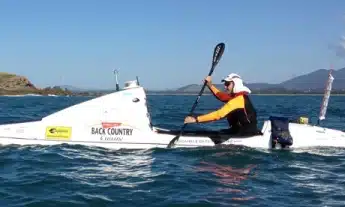We often talk about risk management at the start of our projects and try to highlight risks to our clients as they emerge during a project. But on a recent trip to Lord Howe Island I met a guy who really knows what risk management is all about.
His name is Scott Donaldson, and his project is to be the first person to solo kayak from Australia to New Zealand, and raise awareness/funds for asthma research along the way. He had called into Lord Howe for some urgent repairs to his electrical equipment, as part of his risk management plan.
Although obviously insane, he was fascinating to talk to and very focussed on getting to New Zealand in one piece. As Scott explained, he has a very comprehensive risk management plan, with an A, B and a C plan for every item of risk, from navigation, to communication, food and fresh water, sea anchors, life jackets and so on. So if a piece of equipment fails, he has a plan B to perform the same function as under plan A, but perhaps not as well, or it might take more time, or degrade some other capability. If the B plan fails, he has a plan C that can keep him going, before the final fall back of triggering a personal emergency locating beacon and hoping for rescue.
An amazing guy, and amongst other things, it made me think about how little thought and effort is generally put into risk management on Navision projects, and thinking about situations that will trigger contingency plans.
PS: After three months battling huge seas and winds, paddling around 2,300km and coping with multiple equipment failures, on 11 July 2014 Scott was realistic enough to initiate his final contingency plan – he was safely winched aboard a rescue helicopter when he was within 83km of the Taranaki coast.







